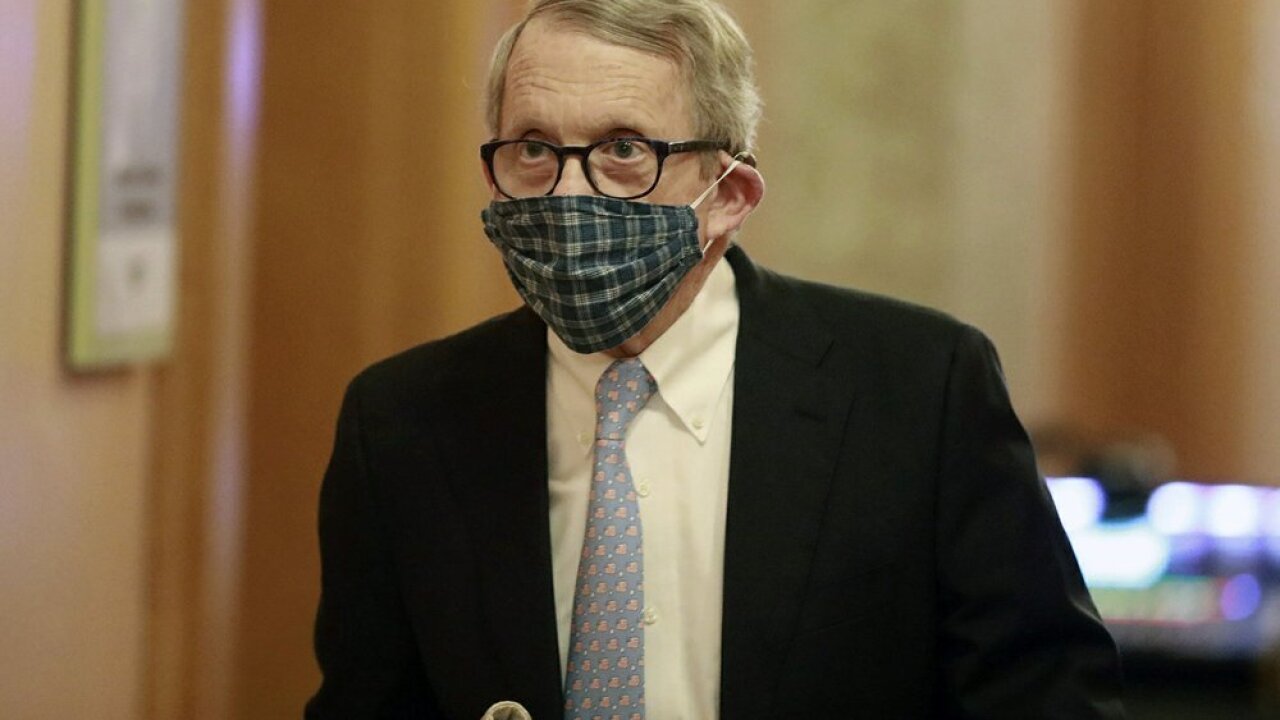About 60% of all Ohioans will be required to wear masks in public beginning Friday night, Gov. Mike DeWine announced in his Thursday news briefing on COVID-19.
Although Hamilton, Butler and Cuyahoga counties will not move up to the Ohio Department of Health’s fourth and highest tier of public health emergency, they and 16 other counties remain on the tier just below — one at which ODH recommends residents “limit activities as much as possible” to avoid spreading or catching the virus.
All 19 of these counties, which are color-coded in red on ODH’s state map, will receive a new mandatory mask order effective Friday at 6 p.m.
But people in other counties — those color-coded in yellow and orange — should mask up, too, DeWine said.
“What we’ve learned throughout this pandemic, and frankly what the scientists told me very early on in February, is, ‘You have to move well before it looks like you have to move,’” he said. “If you live in one of these counties, now is the time to cut this thing off.”
He made a similar plea the day before, when he appeared on television to address Ohioans directly around 5:30 p.m.
No orders were given. DeWine said he had hoped to catch members of the audience as they arrived home from work and to move them with appeals to reason instead of new legal restrictions.
“My experience in life is that people react, generally, better when you ask them to do something, when you give them the evidence, than when you tell them to do something,” he said. “We’ll see how good I’m doing at convincing people in a few days.”
The state’s number of COVID-19 cases has grown by at least 1,000 every day since July 7. Three days later, July 10 would set an all-time record for the largest number of new cases diagnosed in one day: 1,525, displacing the previous April 19 record of 1,380.
DeWine and other health experts have acknowledged that expanding testing, which the state has done through National Guard-run pop-up sites and community health centers, will correspondingly increase the number of cases discovered within in the state. However, DeWine said, the numbers alone are not the source of his concern.
Instead, health experts are worried by the rate at which cases have increased, the number of patients being hospitalized and the prevalence of “community spread,” infections that occur in daily life with no easily traceable source.
Infections that occur in congregate settings such as nursing homes and prisons can be contained, DeWine said. Community spread is a sign the virus has become so prevalent that residents of a given community cannot predict where or when they might be exposed. Some counties in Ohio have seen their numbers double in July after remaining low throughout the spring; some have more cases than entire European countries.
Mask-wearing, hand-washing and social distancing are still the solutions for now, DeWine said.
Dr. Andrew Thomas, chief clinical officer at Ohio State University’s Wexner Medical Center, teleconferenced into the briefing to agree.
“No matter what county you live in, you are at risk for contracting COVID-19,” he said. “There is activity, to some degree, across the entire state.”
Masks and rigorous sanitation efforts are the best tools Ohioans have to protect themselves until a vaccine or other effective pharmacological treatment becomes available, Thomas said.
DeWine declined to directly answer repeated questions about what would happen if any Ohio county were to reach ODH’s highest alert level, marked on state maps as purple. He characterized the map system as a tool meant to inform Ohioans and provide them with a set of recommendations for how to proceed.
However, he said, the situation could change if recommendations aren’t enough.
“I will do whatever it takes to keep people in Ohio safe,” he said. “I hesitated before. I’m not going to hesitate again. But the better pathway, obviously, is if people will look at these colors. If you’re yellow, try to keep from going into orange. If you’re orange, try to keep from going into red. And if you’re red, do everything you can to push it back.”
The counties now colored in red are:
- Allen
- Athens
- Butler
- Clermont
- Cuyahoga
- Delaware
- Fairfield
- Franklin
- Hamilton
- Licking
- Lorain
- Lucas
- Montgomery
- Pickaway
- Richland
- Scioto
- Summit
- Union
- Wood


